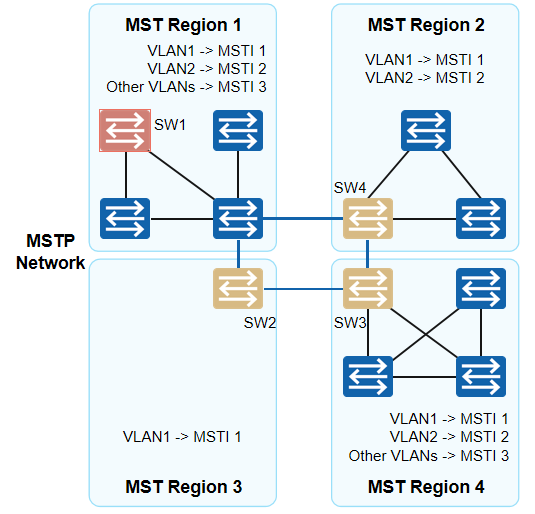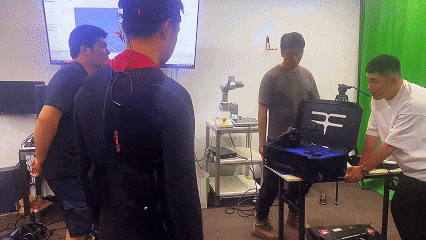参考资料
https://www.cnblogs.com/aaronLinux/p/6219146.html
1.SPI

2.SPI传输
2.1传输示例
首先,CS0拉低选中的SPI Flash ,
然后在每个时钟周期,
DO输出对应的电平。
SPI FLASH会在每个时钟的上升沿读取D0的电平。

2.2SPI模式
根据SCK的电平以及数据在第一个跳变沿还是第二个跳变沿传输,SPI传输总共有四种模式。


3.SPI总线设备驱动模型
SPI系统中设涉及两类硬件:
SPI控制器
SPI设备

spi控制器有驱动程序,提供spi的传输能力。
spi设备也有自己的驱动程序,提供spi设备的访问能力。
4.spi设备驱动框架图
SPI驱动程序由spi_master及spi_device组成
spi_master是在设备树中定义的spi master及master
下边的device信息;当左边drive中的of_device_id和设备树中的compatible参数匹配的时候,会调用driver中的prboe函数,probe函数会生成master,还会生成spi_device。
spi设备左边包括一个spi驱动,当其中的of_device_id和spi_device匹配时,会调用左边driver中的probe函数。

4.1SPI控制器驱动程序
基于平台总线设备驱动模型实现。在probe函数中除了生成spi_master,还会创建spi_device结构体。

4.2SPI设备驱动程序
左边是spi_drive,里边有id_table表示能支持哪些SPI设备,有probe函数。
右边是spi_device,用来描述spi设备,可以来自设备树或者c文件

5.spi设备树处理过程
5.1spi_device
/**
* struct spi_device - Master side proxy for an SPI slave device
* @dev: Driver model representation of the device.
* @master: SPI controller used with the device.
* @max_speed_hz: Maximum clock rate to be used with this chip
* (on this board); may be changed by the device's driver.
* The spi_transfer.speed_hz can override this for each transfer.
* @chip_select: Chipselect, distinguishing chips handled by @master.
* @mode: The spi mode defines how data is clocked out and in.
* This may be changed by the device's driver.
* The "active low" default for chipselect mode can be overridden
* (by specifying SPI_CS_HIGH) as can the "MSB first" default for
* each word in a transfer (by specifying SPI_LSB_FIRST).
* @bits_per_word: Data transfers involve one or more words; word sizes
* like eight or 12 bits are common. In-memory wordsizes are
* powers of two bytes (e.g. 20 bit samples use 32 bits).
* This may be changed by the device's driver, or left at the
* default (0) indicating protocol words are eight bit bytes.
* The spi_transfer.bits_per_word can override this for each transfer.
* @irq: Negative, or the number passed to request_irq() to receive
* interrupts from this device.
* @controller_state: Controller's runtime state
* @controller_data: Board-specific definitions for controller, such as
* FIFO initialization parameters; from board_info.controller_data
* @modalias: Name of the driver to use with this device, or an alias
* for that name. This appears in the sysfs "modalias" attribute
* for driver coldplugging, and in uevents used for hotplugging
* @cs_gpio: gpio number of the chipselect line (optional, -ENOENT when
* when not using a GPIO line)
*
* @statistics: statistics for the spi_device
*
* A @spi_device is used to interchange data between an SPI slave
* (usually a discrete chip) and CPU memory.
*
* In @dev, the platform_data is used to hold information about this
* device that's meaningful to the device's protocol driver, but not
* to its controller. One example might be an identifier for a chip
* variant with slightly different functionality; another might be
* information about how this particular board wires the chip's pins.
*/
struct spi_device {
struct device dev;
struct spi_master *master;
u32 max_speed_hz;/* 该设备能支持的spi时钟最大值 */
u8 chip_select;/* 是对应的spi_master下边的第几个设备 */
u8 bits_per_word;/* 每个基本的spi传输涉及多少位 */
u16 mode; /*spi_chpa spi_cpol组合起来得到spi传输的四种模式 */
#define SPI_CPHA 0x01 /* clock phase */
#define SPI_CPOL 0x02 /* clock polarity */
#define SPI_MODE_0 (0|0) /* (original MicroWire) */
#define SPI_MODE_1 (0|SPI_CPHA)
#define SPI_MODE_2 (SPI_CPOL|0)
#define SPI_MODE_3 (SPI_CPOL|SPI_CPHA)
#define SPI_CS_HIGH 0x04 /* chipselect active high? */
#define SPI_LSB_FIRST 0x08 /* per-word bits-on-wire */
#define SPI_3WIRE 0x10 /* SI/SO signals shared */
#define SPI_LOOP 0x20 /* loopback mode */
#define SPI_NO_CS 0x40 /* 1 dev/bus, no chipselect */
#define SPI_READY 0x80 /* slave pulls low to pause */
#define SPI_TX_DUAL 0x100 /* transmit with 2 wires */
#define SPI_TX_QUAD 0x200 /* transmit with 4 wires */
#define SPI_RX_DUAL 0x400 /* receive with 2 wires */
#define SPI_RX_QUAD 0x800 /* receive with 4 wires */
int irq;
void *controller_state;
void *controller_data;
char modalias[SPI_NAME_SIZE];
int cs_gpio; /* chip select gpio */
/* the statistics */
struct spi_statistics statistics;
/*
* likely need more hooks for more protocol options affecting how
* the controller talks to each chip, like:
* - memory packing (12 bit samples into low bits, others zeroed)
* - priority
* - drop chipselect after each word
* - chipselect delays
* - ...
*/
};
5.2设备树中的spi节点
spi4 {
compatible = "spi-gpio";/* 这个属性很关键,因为根据这个属性找到spi_master */
pinctrl-names = "default";
pinctrl-0 = <&pinctrl_spi4>;
pinctrl-assert-gpios = <&gpio5 8 GPIO_ACTIVE_LOW>;
status = "okay";
gpio-sck = <&gpio5 11 0>;
gpio-mosi = <&gpio5 10 0>;
cs-gpios = <&gpio5 7 0>;
num-chipselects = <1>;
#address-cells = <1>;/* 这个SPI Master下的SPI设备,需要多少个cell来表述它的片选引脚 */
#size-cells = <0>; /* 这个必须设置为0 */
/* gpio_spi是spi_master 下边的device节点 */
gpio_spi: gpio_spi@0 {
compatible = "fairchild,74hc595";/* 根据它找到spi device驱动 */
gpio-controller;
#gpio-cells = <2>;
reg = <0>;/* 使用哪个片选引脚 */
registers-number = <1>;
registers-default = /bits/ 8 <0x57>;
spi-max-frequency = <10000>;/* 该设备支持的最大spi时钟 */
};
};




















